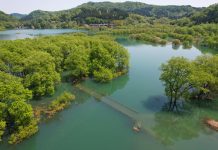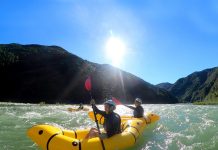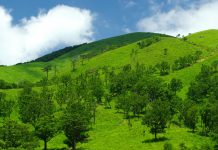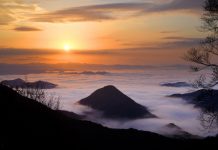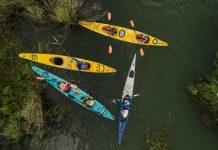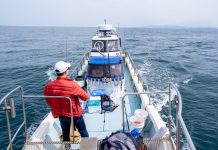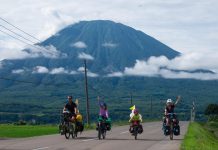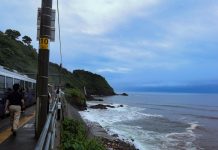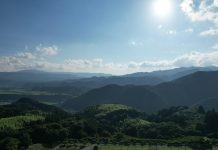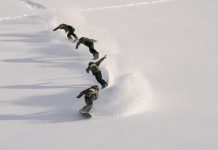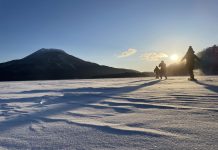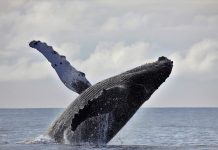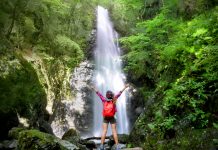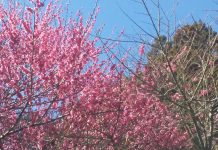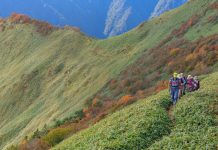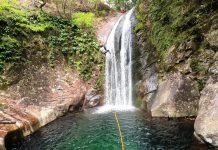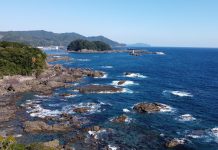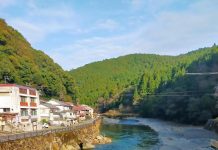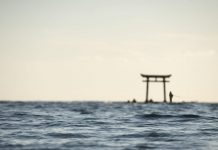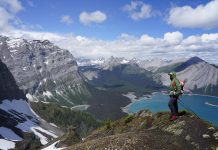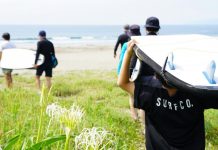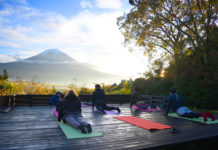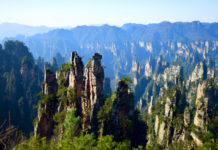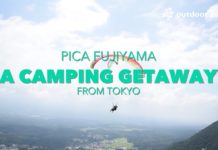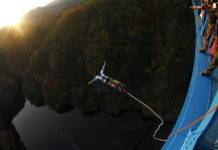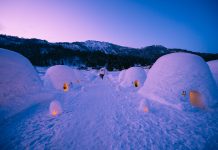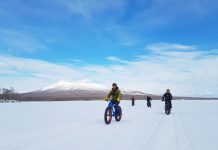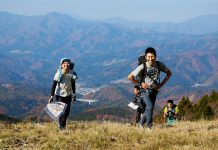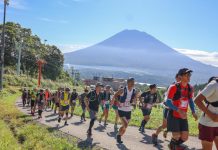“Geez! Why can’t we find this thing? It should be here.”
“I know!”
“What’s your radar reading?”
“Says we’re standing within a meter of it.”
“Mine too. How about Google Maps?”
“Says we’re right on top of it. Maybe it’s been muggled!”
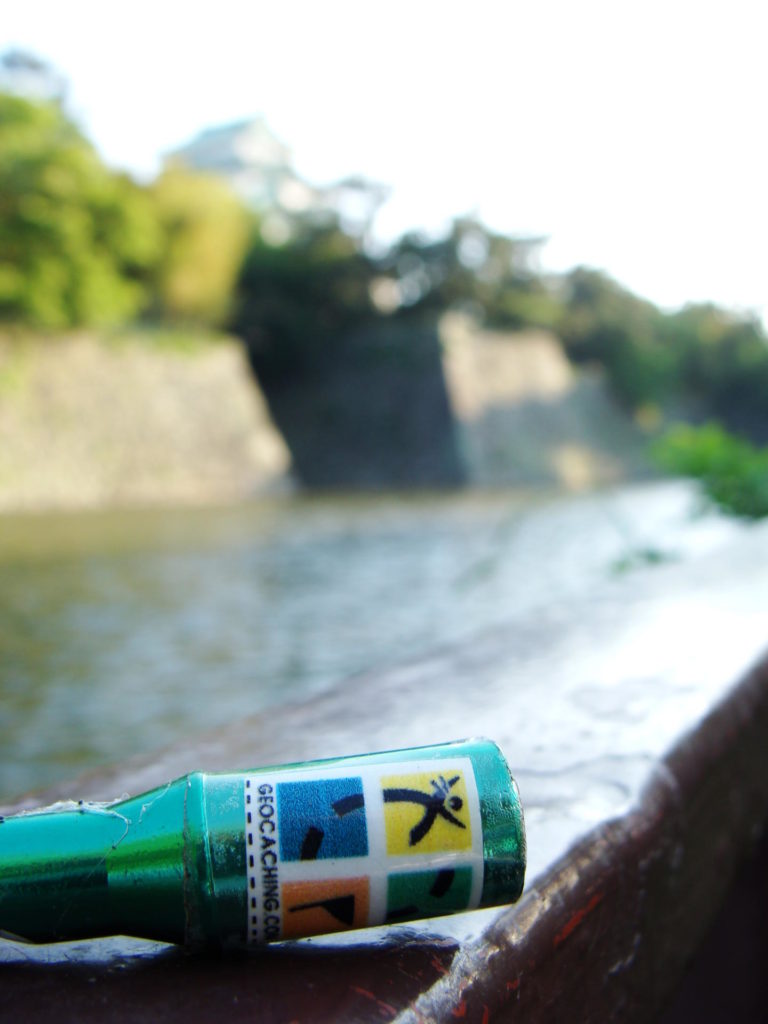
“It” is the size of a PET bottle cap. Actually, in many cases, it is a PET bottle cap. It may have been painted a rusty brown color, the exact shade of the lamppost to which it’s stuck. Or perhaps it is painstakingly camouflaged and hidden under the big rock in the park by your house. You’ve probably strolled past it countless times; may have even brushed up against one, and you never even knew it was there.
This little unseen container belongs to a clandestine world cleverly veiled to muggles, not unlike the wizarding world of the Harry Potter books—without the magic, but with all the excitement and adventure.
Inside this tiny container awaits nothing more than a log book, a foot-long strip of paper wound tightly around a small chunk of toothpick and sealed in a small plastic pouch. The log does not contain anything top secret. Nor does it bestow upon you any wizardly ways. It is simply there to be signed.
But, wow! The feeling you get when you do sign it? The rush that pours over you during that split second when you realize you’ve found it is unbelievable. Yet to understand just what it is I’m talking about, you have to find one on your own.
So, quick, strap on some shoes (preferably of the hiking variety, unless you’re smack dab in the city, and even then it’s still not a bad idea), grab your cell phone, and join me as we pull aside the curtain and enter the wonderful world of geocaching.
“Muggled? Nah, I doubt it. Veggiesalads’ log says he found it just a few days ago.” “Did you read the hint?” “There wasn’t one.” “Hmm. I’ll check the logs again. Maybe someone added a hint there.” “Good idea. I’ll take another look at the photo gallery.”
Geocaching is the unusual, yet steadily growing pastime of hunting for, locating and logging the discovery of tiny containers, called “geocaches,” hidden all over the world by adventure-seeking geocachers. Geocaching found its humble roots 12 years ago, thanks to the ingenuity and tech savvy of three guys in the American Northwest. (Thank you, Dave Ulmer, Mike Teague and Jeremy Irish.)
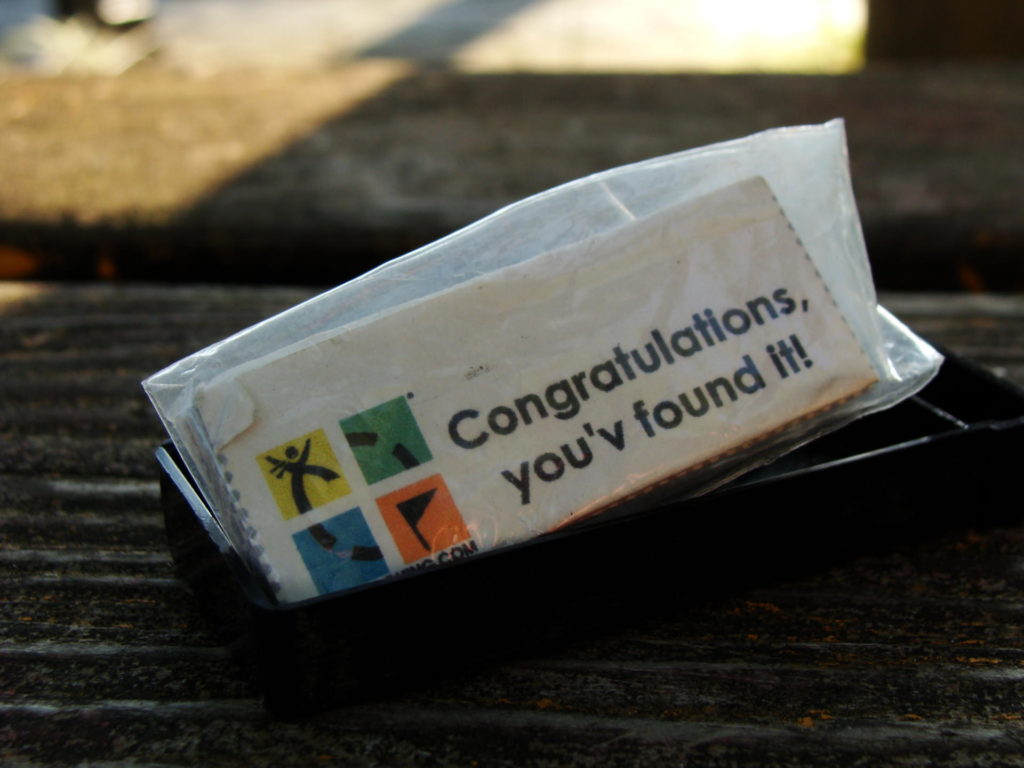
One day in May of 2000, Ulmer, a GPS enthusiast in Beavercreek, Oregon, had a fun idea. He decided to take a bucket containing a few simple items into the woods of Oregon and hide it. He then marked the coordinates of the bucket’s location and posted it on an online GPS users’ group, challenging anyone with a GPS device to find it. (This was back in the day when cell phones were simply used to call people.) He had just one rule, which is still in effect to this day: “Take some stuff, leave some stuff.”
Later that month, Teague, another GPS enthusiast and the first finder of Ulmer’s bucket, set up a mailing list for other finders of the buckets to share their experiences and the thrill of their discovery. Not three months after that, Irish, a web developer in Seattle, stepped onto the scene.
After discovering Teague’s website, he bought his own GPS device and soon caught the geocaching bug. In September 2000, with the help of Teague, he created Geocaching.com where, today, almost five million geocachers log their finds every day.
“Hey, take a look at this shot. It’s called ‘Near the Cache’.” “Okay… what if we stand in the spot the photo was taken.” “That might work.” “See anything?”
My first peak behind the geocaching curtain came this past January, when friend, colleague and fellow resident of Nagoya, Tadd Vail (Geocaching Handle: TadVa), told me about this game he’d stumbled upon while surfing the net. At first I was skeptical. Treasure hunting in the city? Really?
Then I thought about my two sons, Kai (9) and Rein (7), and decided it was worth a try. Heck, at the very least it would get us outside on a sunny Saturday or Sunday afternoon instead of stuck inside playing Wii.
A week later, I downloaded CacheSense onto my BlackBerry (the 30-day trial, of course, because at the time I had no idea how much fun it would be), set up my free membership at Geocaching.com and soon found there was a cache in a park less than a kilometer from my apartment. It was that easy.
The next weekend, my friend Atsushi and his family were visiting, so I invited them along on the hunt for our first geocache. Excitement was thick in the air. We were about to take our first step into a magnificent new world.
About an hour later, our hands and knees soiled and our spirits dampened, we returned home with nothing to show for but a few stiff backs, a sliver and a growing doubt that geocaches really exist at all. Believe it or not, when you have absolutely no idea what it is you’re looking for, it’s extremely difficult to find. However, the seed had been planted, and we were determined to find at least one of these little buggers. Besides, I still had three weeks on my trial period.
So, the following Saturday, a “NEAREST CACHES” search with CacheSense (now one of my all-time favorite time killers) revealed 12 geocaches hiding around Nagoya Castle. I told my boys to strap on their bicycle helmets. We were goin’ huntin’!
“Wait a second! Squat down. Take a look at the bolts on that bench.” “One, two…there’re five on this side. How many on that side?” “Four over here.” “We found it! Woo hoo! Let’s pop this baby open! TFTC!” “Sweet.”
The first geocache we found was in the Flower Plaza in the park adjacent to Nagoya Castle. (Geocaches are almost always hidden somewhere with a great view or some trivia-worthy history.) The description on Geocaching.com mentioned a “base to enjoy the flowers” and, after giddily watching the distance reading fall to a mere three meters on the app’s radar, we found ourselves standing in front of a long wooden bench.
Upon the bench sat two elderly muggles who soon took notice and asked what we were up to. Kai kindly told them we were treasure hunting, to which they shrugged and immediately went back to ignoring us. (It’s funny, really. No matter how silly I’ve felt in public places reaching under park benches or peering into flower beds, this seems to be the common reaction by muggles in Nagoya: mild interest followed by instant indifference.)
Moments later, my fingers swept across something under the bench that budged ever so slightly. Could this be it? “Kai! Rein!” I called in my loudest whisper. My heart began to race. I reached under the bench again and gripped the tiny plastic bottle cap. With a soft magnetic tug, I pulled the cache free of the bench, and we were gazing in wonder at our first find. Geocaches really do exist, and this little one had been hiding for nearly two years without ever being found by accident (which does happen on very rare occasions). I looked at my boys and saw my ear-to-ear smile reflecting on both of their faces.
It may sound silly but, at that moment, I think we were all hooked. I immediately wanted to find another, and another, and 65 finds later I still feel that way. The thrill never seems to die; it only grows stronger (as is evident at www.cachestats.com where the leading geocacher worldwide is listed as having found more than 65,000 caches). My boys and I have even started planning to hide our own geocaches, complete with a Geocoin (see photo) for each son.
Now you’ve had a peek behind the Geocaching curtain. The next time you’re visiting Nagoya, head over to Shonai Ryoukuchi Park. Have a barbecue, ride the paddle boats, enjoy the view. Then, when no one’s looking, slip behind the curtain and enter the wonderful world of geocaching.
If you find a DupuisBoys cache with a Canadian Geocoin in it, do Kai or Rein a favor and move it closer to its destination: Grandma’s house in Canada.
Geocaching on the Cheap
GPS has become much more easily accessible to the masses thanks to today’s high tech smart phones. No longer do you need to fork out tens of thousands of yen for a GPS device. Simply push a few buttons on your GPS-enabled cell, and within minutes you’ll have just about everything you need to get started. Android, Blackberry, and iPhone all support a growing number of geocaching apps, many of which offer free 30-day trials and multiple languages. Below are just a few examples.
- Android: As of this publication, Geocaching.com lists nine applications available to Android users. Groundspeak Inc., the company that owns and operates Geocaching.com, offers its own app for around ¥800 and has won the adoration of thousands of its Google Play users. Neongeo is also rated highly on Google Play and is “powered by Geocaching Live,” which means you can access Geocaching.com securely from out in the field, and it costs a mere ¥327.
- Blackberry: The official app for Blackberry users is Trimble’s Geocache Navigator. It’s a powerful and easy-to-use app, and runs around ¥1,600. For those with a smaller budget, such as yours truly, CacheSense is an easy-to-use app with all the necessary features at only ¥800.
- iPhone: The Geocaching app by Groundspeak Inc., available at iTunes, appears to be the hands-down app of choice for iPhone users, including my fellow geocacher, Tadd, who says, “It was the best 10 bucks I’ve spent in a long time.”
From the Trail
“What I like best about the hobby is that it takes me to places I’d probably never get to otherwise and, so far, they’ve all had either exciting terrain or interesting history and sometimes both. There’s always the thrill of adventure. I set out with a sense of purpose, enjoy the anticipation of being on a treasure hunt and revel in the satisfaction of finding treasure. What’s more is there is no limit to the treasures you can search for. The adventure always continues, and you get to see and experience new places all the time. Finally, it’s the perfect activity I can share with my 3-year-old boy. It is father-son bonding in the great outdoors, right where I want to be, and for the most part, it’s free.” – Tadd Vail, GeocacherGeocaching
Glossary
Along with the thrill of the hunt and the pride of the find is a list of acronyms and lingo as long as my arm that you’ve probably never heard of. The full list can be found at Geocaching.com, but here are a few of the most common:
- BYOP: Bring your own pen. Most caches you’ll encounter are so small, it’s impossible to include a pen to sign the logbook. So remember to bring your own.
- CITO: Cache In Trash Out. Since 2002, this program has encouraged geocachers to help in cleaning up parks and other cache-friendly places around the world. Go to www.geocaching.com/cito for more info.
- DNF: Did not find. This acronym is self-explanatory and is by far my least favorite.
- Geocoin: Roughly the size of a ¥10 coin, Geocoins are like little plastic hitchhikers that are moved from cache to cache on their way to their ultimate goal/destination.
- Muggle: Someone who does not hunt for geocaches. As the Geocaching.com glossary states, “Geomuggles are mostly harmless.”
- TFTC: Thanks for the cache. This is geocaching etiquette and is usually written in the logbooks and the online logs.

